OF RESOURCES
Author
Herve Offredo
MSc in Microbiology, MBA in Management and Finance
Senior Vice President Sales and Marketing
Barnet Products
140 Sylvan Avenue
Englewood Cliffs, 07632 NJ
ABSTRACT
What are algae? Something greenish-brownish, slimy, smelly, and attached to the rocks when the tide is low . . . slippery if you walk on it and after all, not that clean. This was yesterday’s perception.
We are far removed from this perception nowadays when we think about the ingredient space occupied by the Marine Ingredients for Cosmetics category. Today, in cosmetics and personal care ingredients, one can chose from active fractions of large algae, polysaccharides from planktonic origin, or actives from plants from the coasts of many landmasses around the world. There are numerous ingredients available from marine origin, and they support many of the desirable claims consumers want to see when they buy their cosmetic and personal care products. In this chapter, we present an overview of marine ingredients and point out their value to the cosmetic and personal care formulator.
c. Other resources from marine origins
4.2.5.2 Examples of the use of macroalgae in cosmetics
4.2.5.3 Examples of the use of microalgae in cosmetics
c. Thioreduxine/thioreduxine reductase
4.2.5.4 Examples of the use of coastal plants in cosmetics
4.2.5.1 MARINE SOURCES OF ALGAE
IN THE BEGINNING . . . it is believed that there were only bacteria on earth. Some of them evolved and had chlorophylian pigments; thus, the first algae were born. They could use the energy of the sun via photosynthesis to produce oxygen (O2). They were major participants in the production of oxygen surrounding our planet—without algae, life would not have evolved as we know it today. Prehistoric evidence of the presence of the earliest algae is found in the fossils of stromatolites (Figure 1) [1]. These coral-like structures were created by the precipitation of sediments of cyanophycae—also known as the blue algae named Phormidium.
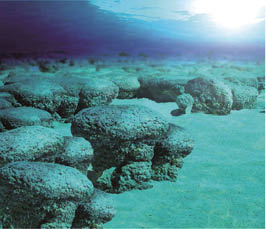
Figure 1: Stromatolites
There are more than 25,000 kind of algae—there is more difference between a brown alga and a green alga than between the same green alga and a tree in the forest. Blue algae are close in structure to red algae (Rhodophycae), which are close to that of brown algae (Pheophycae) [2].
Algae are usually in water (but not always). They are different from other plants, as they do not bloom, they have no roots, no stem, and no leaves. All algae have in common a green pigment that provides the chlorophyll and therefore their ability for photosynthesis: (Figure 2) [3] [4].
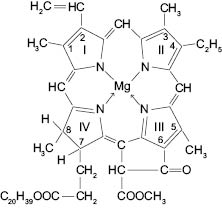
The two major categories of algae are: unicellular and microscopic. The latter type comprises an important part of the plankton and macroalgae. Examples of microalgae are: Anacystis, Phormidium (Figure 3), Spirulina . . . and their size can be as small as fraction of a millimeter.
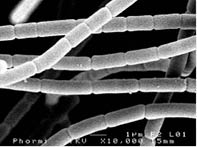
Figure 3: Phormidium
Example of macroalgae are: Laminaria, Palmaria, Fucus, Chondrus (Figure 4) . . . and these types can be as long as 40 meters.

Figure 4: Chondrus
Blue algae molecules are used for cosmetic applications: enzymes, such as photolyase, and various types of exopolysaccharide. Macroalgae are rich in polysaccharides, which can be hydrolyzed into bioactive oligosaccharides. This important process will be discussed further later in this chapter.
The climate condition and soil composition by the shore are not optimal for plants to grow in view of the variation of climatic conditions and the composition of the soil. The plants growing in these areas develop a resistance to high salinity in the face of their repetitive exposure to the tides, and they have developed a resistance to dryness as well [5] [6]. Their adaptive response of the algae to the harsh environment led to production of defensive capabilities and protective secondary metabolites that may be beneficial to skin care applications and offer a significant opportunity for further exploration beyond the encouraging results and products available at this writing.
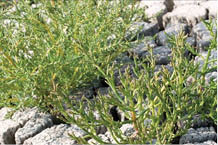
Figure 5: Salicornia
Examples of coastal plant: Salicornia (Figure 5) and Rock Samphire (Figure 6).
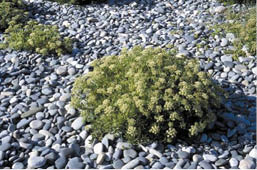
Figure 6: Rock Samphire
c. Other resources from marine origins
Minerals are in fashion in cosmetics, and the water of the ocean is a balanced cocktail of trace elements and minerals (more than 63 elements of the periodic chart have been identified). These minerals can be supplied as salts, or in the form of water including Hawaiian deep seawater, and various waters from the lagoons of Polynesia and the Dead Sea of Israel.
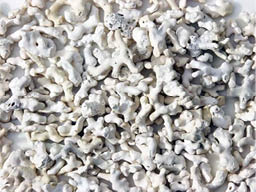
Figure 7: Lithothamnium
Microdermabrasion is also an important field where sea minerals provide an alternative to chemical polyethylene beads. Such materials are opportunities for formulators to investigate the white sands of Bora Bora, the black volcanic sands of Tahiti . . . or back to the algae powders of yellow or blue lithothamnium.
Lithothamnium (Figure 7) can be crushed to different sizes for milder face care or harsher foot care.
4.2.5.2 EXAMPLES OF THE USE OF
MACROALGAE IN COSMETICS
Macroalgae produce polysaccharides [7]; these large polymers of sugar are in the “skin” of the algae. There is an amazingly striking similarity observed when comparing a cross-section of an alga (Figure 8) with the histology of human skin (Figure 9).
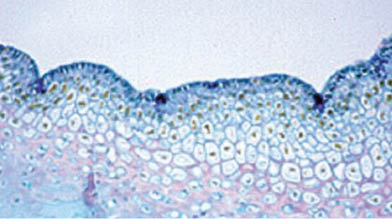
Figure 8: alga skin
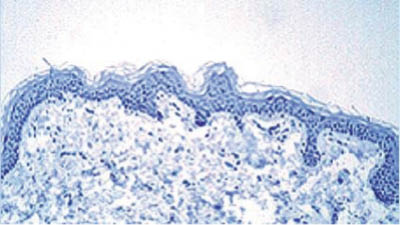
Figure 9: human skin
The polysaccharide polymers present in the algae can retain a good level of moisturization—a result of repetitive exposure to low tides and the accompanying low-moisture environment.
Stay updated, free articles. Join our Telegram channel

Full access? Get Clinical Tree








